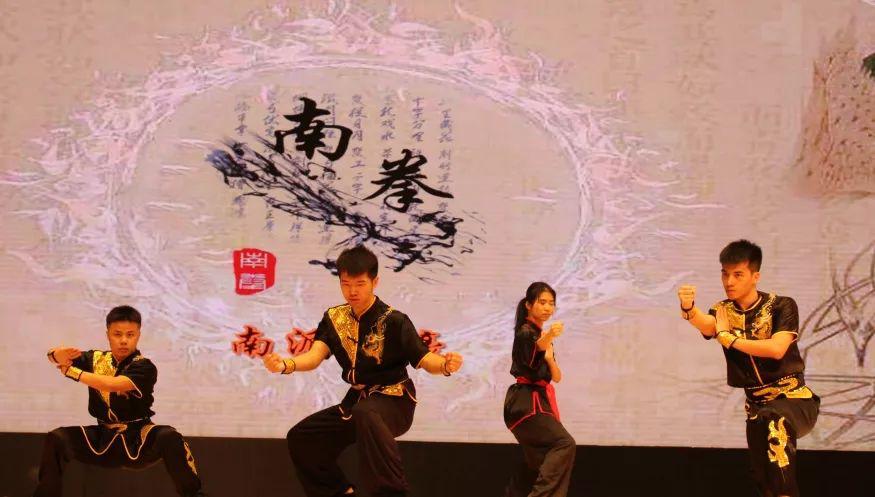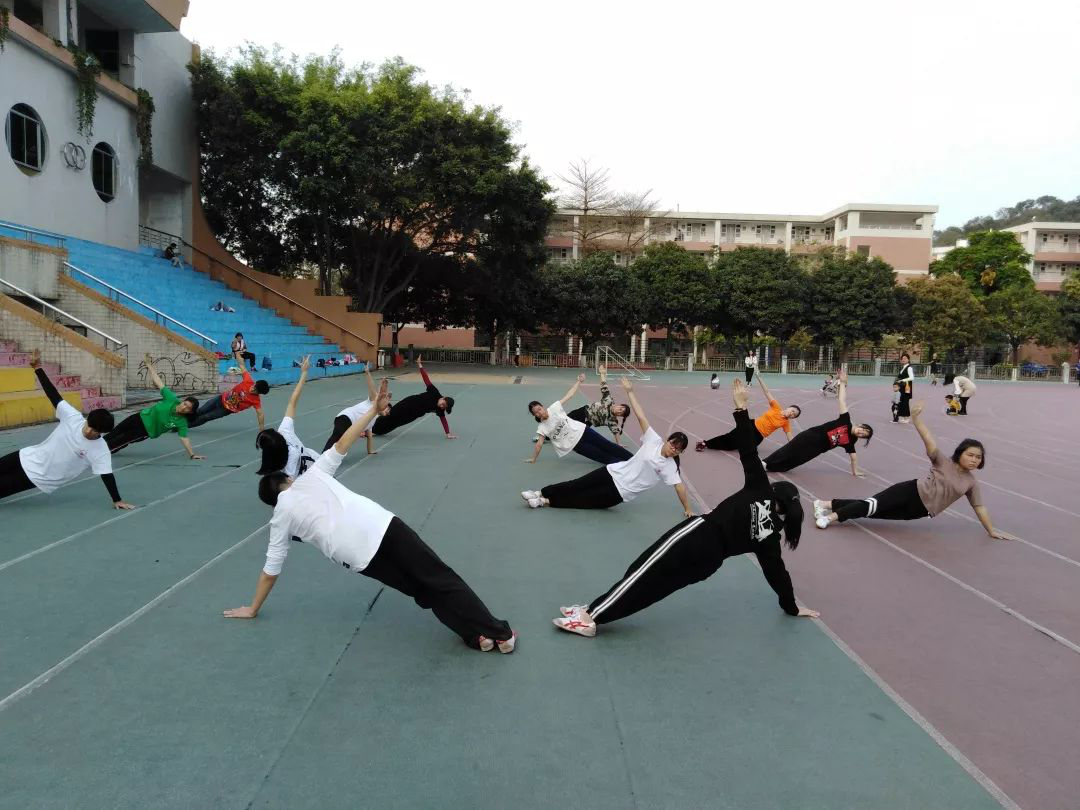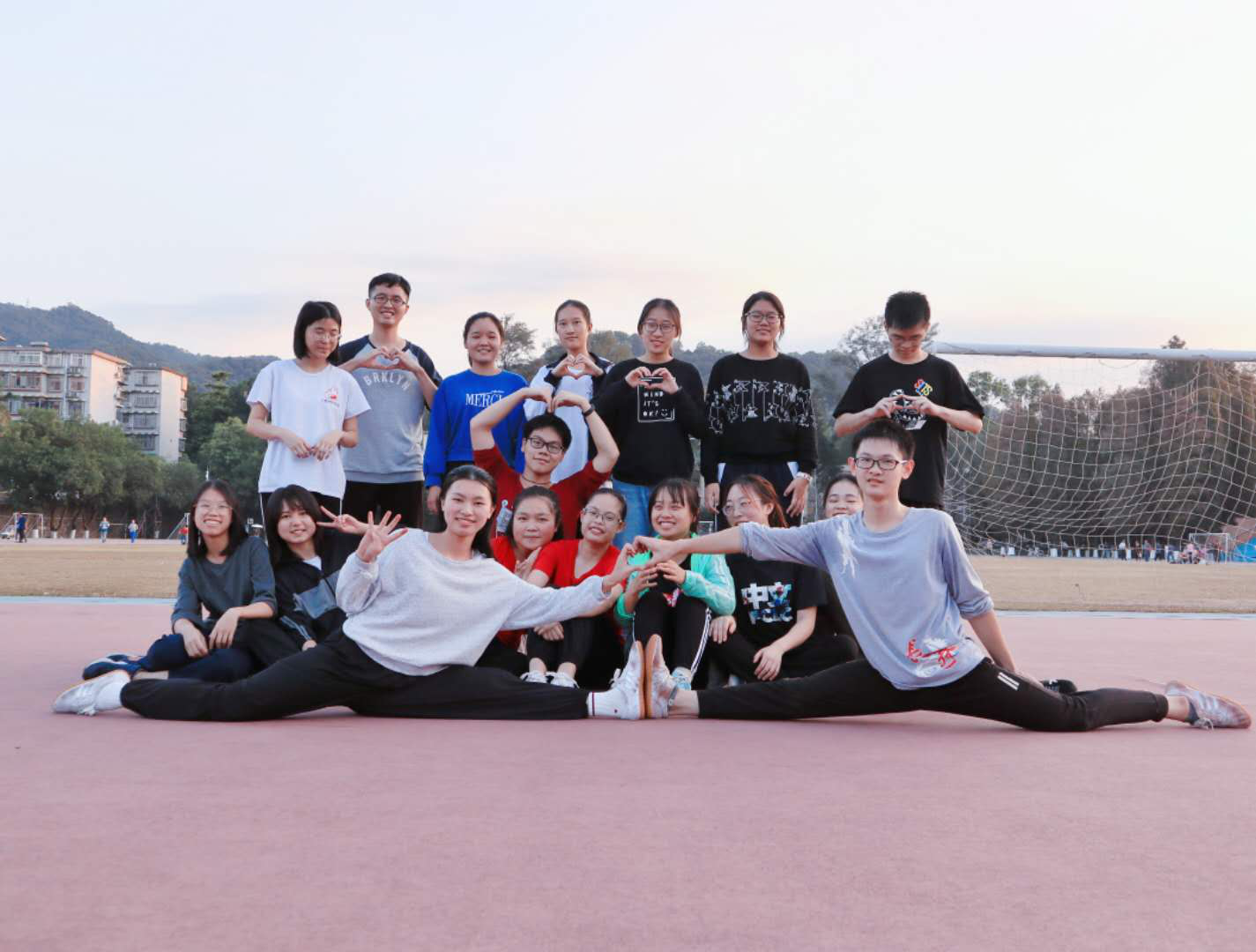When jogging across the sports ground, it’s not hard to notice that some students are practicing different kinds of Wushu in small groups, dressing in the same T-shirts printed with Chinese characters. They raise their heads, square their shoulders and shout slogans, as if they were in a battle field and ready to fight. Who are these Wushu masters? They are from the WUSHU association, a student club focusing on promoting traditional Wushu culture.
Profound yet Modern
Martial arts, also known as Wushu or Kungfu, are part of China's profound, traditional culture. They are generally divided into free hand boxing and armed boxing. Just as the name implies, armed boxing refers to fighting with weapons while the free hand boxing without. Both forms require a close combination of the inner spirit and outer body movements with coordinating breathing and pacing, which challenges practicers physically and mentally.

Sharp eyes, powerful fists and enormous energy
Over its long history of development, Wushu still remains popular today, with new blood being infused in GDUFS. Established on March 21st, 1985, this is where GDUFS students make acquaintance with Wushu lovers. Every year, it embraces exchange students from all around the world to learn about Wushu, shedding a wholly new light on intercultural communication. Until now, it has become one of the most influential associations in GDUFS and made fruitful achievements in Wushu promotion.
Sweat and Efforts
At five o’clock in the afternoon, these Wushu practicers first run around the playground in a line for five or six rounds. After that, they split into different groups and do leg stretching. Many new members have never practiced Wushu so they first practice basic skills of Wushu like doing the splits, taking Firm Stance (Mabu) or Cross Stance (Jiaochabu) and learning some simple Combination of quan. At the second year, they practice different types of Chinese quan like Wudang quan, Taichiquan, Changquan, Nanquan, and Nanzhi quan according to their interests. They can also practice with traditional Wushu instruments like swords or long sticks. Sweating heavily, they all keep practicing until sunset. Before dismissing, all groups gather together and practice the simple combination of quan. When they shout “Ha” alongside one movement, the sound lingers on the playground.

Members can improve physical fitness by practicing all kinds of basic Wushu skills, a fundamental for learning Chinese quanshu and instruments.
Persistence and Cohesion
When journalist asked about the reason why Gao Qianyi, the president of theWUSHU association for almost three years decided to join, she said, in the very beginning, her thought was to shape her body and learn those impressive wushu movements shown by the senior members. But afterwards, she found that what she gained from the big family is much more than she expected. “When I was still a freshman, I did not have access to those specialized courses such as Chinese boxing and sword skills. Our training is all about basic exercises, and it can be utterly tough. Our group leader always encourages us with such a sentence: ‘ just hold on for five more seconds ’, and now I understand the word‘ tough ’ requires persistence. You can take pride in your improvement in the process of persisting, and you may find everything just becomes easier after struggling through hardship.”
No matter where are you from, whether you are tall or short, thin or plump or robust, the wushu association would provide you an opportunity to find out more about yourself, and the sheer appeal of traditional Chinese culture.

After training, some of those fellows took photo on the playground

